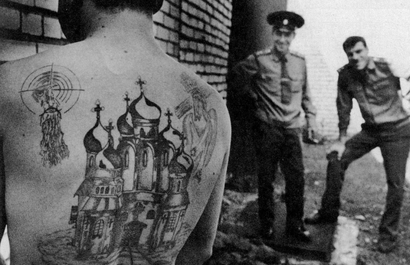Cosmonauts and Communism: Soviet Space Propaganda Posters During the Cold War

The Cold War was a long time coming. Western fear of Communism had been growing since the Russian revolution, and by the close of World War 2, the uneasy peace between the Western superpowers and the USSR was faltering. As tensions escalated in the late 50s, both sides were building nuclear arsenals in a strategy of Mutually Assured Destruction. Amid this mounting mistrust, the starting pistol had been fired on the Space Race.
It was initially a practical concern: rocket technology solved the problem of sending huge nuclear payloads over long distances. But the Space Race soon evolved into something of much greater symbolic significance. Space became the dramatic arena for an ideological and intellectual struggle between Communism and Capitalism. “The astronauts, all of us, really believed we were locked in a battle of Democracy versus Communism,” said John G. Glenn, the first American to orbit the earth. Winning the Space Race meant winning the Cold War.
But how to win? Building better rocket technology was only half the battle. Using it as a vehicle to disseminate the Communist ideology was the other piece of the puzzle.

How Sputnik Became a Symbol of Soviet Superiority
With the launch of Sputnik 1 in October 1957, the USSR took an early lead. Being pipped at the post by the Soviets came as a nasty surprise to the USA. The first man-made object in orbit, Sputnik 1 was launched on the back of an intercontinental ballistic missile and spent nearly 3 months in space. It sent the USA into a tailspin.
Writing in the New York Herald Tribune, the economist Bernard Baruch said of Sputnik “It is Russia, not the United States, who has had the imagination to hitch its wagon to the stars and the skill to reach for the moon and all but grasp it. America is worried. It should be." Crucially, it wasn’t just in terms of technology, but imagination that the Soviets were proving superior. Sputnik was a modern marvel – but its imagery and symbolism were arguably even more powerful.
The USSR declined to release any images of Sputnik for a full five days after its launch. Insecurity was at the heart of that decision: the Soviets feared giving away secrets the USA might be able to use to its advantage. And besides, Sputnik wasn’t all that impressive to look at. But a shaken USA interpreted the silence otherwise. If they were being so cagey about the science behind Sputnik, it must be even more advanced than they’d feared.
The image of Sputnik (or lack thereof) was just as powerful among the Soviet people, who were encouraged to look for the satellite in the night sky. But though Sputnik itself had been highly polished, it was so small as to be barely visible to the naked eye. Once again, image and idea trumped actuality. When people looked at Sputnik, they didn’t see the technology. They saw Soviet superiority.

How Cosmonauts were Co-opted into the Communist Agenda
That fact wasn’t lost on the Soviet regime. They understood the power of the image and the Space Race quickly became one of the central motifs of the Soviet propaganda machine.
Nowhere was this more apparent than in the adoration of iconic cosmonaut Yuri Gagarin. On 12th April 1961, he achieved something approaching Godlike status as he orbited the earth for 1 hour and 48 minutes onboard the Vostok 1. Suddenly, Gagarin’s face was everywhere. News of his achievement was splashed across the front page of every newspaper in the world; statues were erected, buildings named and even a national holiday, Cosmonautics Day, established in Gagarin’s honour. First Secretary Nikita Kruschev even declared Gagarin a ‘Hero of the Soviet Union', the highest military distinction in the USSR.
As Gagarin’s star rose, cosmonauts as Nationalist heroes became a common feature of Soviet propagandist art. New designs were often released to celebrate anniversaries or new technological breakthroughs. In them, cosmonauts were depicted as explorers of new worlds, looking boldly back at the viewer. And their political message was clear: the posters typically featured strong splashes of Communist red and rarely appeared without the CCCP (USSR) logo. Cosmonauts and Communism had become synonymous.

How Space Landed on the Streets of the USSR
The USSR made "the streets...our brushes, the squares our palettes” – and as such, state-sponsored, designed and produced propagandist art was hung en masse in factories, schools, theatres and around towns. Space was everywhere and it so captured the Soviet imagination that it became part of the fabric of everyday life.
Rockets reflected communism in the physical - they were utilitarian objects, functional and nothing more. In turn, architecture of the period came to incorporate ideas of space. There was an emphasis on massiveness of forms and a preference for reinforced concrete and glass, which lent buildings a “sheer space-age strangeness”.
Playgrounds were designed to resemble rockets, while entrances to metro stations featured colourful mosaics of floating cosmonauts. Vacuum cleaners were shaped like orbiting planets, snowmobiles like lunar capsules and lamps like a rocket at launch. Slogans that read ‘Soviet man – be proud, you opened the road to stars from Earth!' and ‘Our triumph in space is the hymn to Soviet country!’ were printed on candy packaging, matchboxes and perfume.
But despite the ubiquity of Space Race propaganda and its obvious effect on the public imagination, the Soviets didn’t win the Space Race.

How the Soviet Dream of Space Came Back to Earth
In purely technological terms, the USSR trumped the USA. Sputnik and Gagarin were followed by a series of other firsts: the first woman in space, first lunar impact, first image of the dark side of the moon, first space rover and first space station were all claimed by the Soviets. But in the popular imagination, the Space Race was won when the USA put a man on the moon in 1969. Few images are as iconic or enduringly resonant.
Three years later, tensions between the two superpowers briefly eased. And three years after that, in 1975, the world watched as an American Apollo module docket with a Soviet Soyuz last capsule. The two commanders shook hands in space. The Space Race was over.
Surviving propaganda posters are a potent reminder of the stratospheric ambitions of the Soviet regime during the Space Race. They’re rare, and highly sought after. Shop our vintage space propaganda posters below or explore the collection here.






